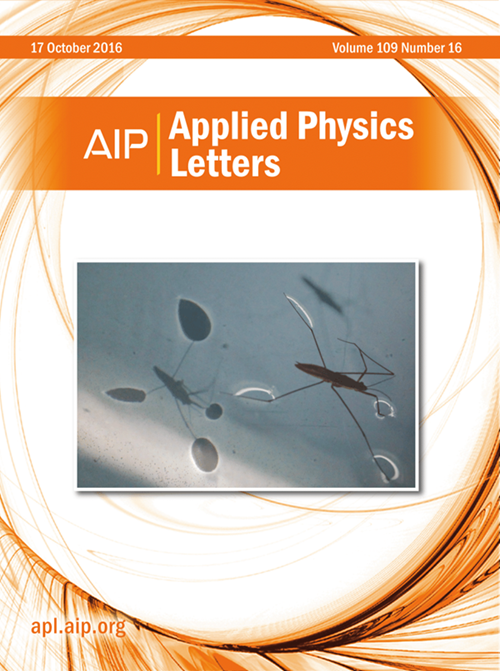一种用于在敏感材料上制造介观装置的非侵入式干转移方法
IF 3.5
2区 物理与天体物理
Q2 PHYSICS, APPLIED
引用次数: 0
摘要
许多具有新奇或奇异特性的材料对环境因素(如空气、溶剂和热量)高度敏感,这使器件制造复杂化并限制了它们的潜在应用。在这里,我们提出了一种通用的亚微米制造方法,用于使用干转移技术的介观器件,专门为敏感材料量身定制。这种方法利用PMMA口罩,结合水溶性涂层作为牺牲层,以确保敏感材料在加工时不暴露于有害的环境条件下。整个制造过程在手套箱中进行,采用干燥技术,避免空气,溶剂和热暴露,最终在封装步骤中完成。我们通过分别制作和表征一维和二维材料K2Cr3As3和WTe2器件来证明该方法的实用性。结果表明,我们的技术保持了材料的完整性,提供了良好的接触界面,并广泛适用于一系列敏感材料。本文章由计算机程序翻译,如有差异,请以英文原文为准。
A non-invasive dry-transfer method for fabricating mesoscopic devices on sensitive materials
Many materials with novel or exotic properties are highly sensitive to environmental factors such as air, solvents, and heat, which complicate device fabrication and limit their potential applications. Here, we present a universal sub-micrometer fabrication method for mesoscopic devices using a dry-transfer technique, tailored specifically for sensitive materials. This approach utilizes PMMA masks, combined with a water-dissoluble coating as a sacrificial layer, to ensure that sensitive materials are processed without exposure to harmful environmental conditions. The entire fabrication process is carried out in a glovebox, employing dry techniques that avoid air, solvents, and heat exposure, culminating in an encapsulation step. We demonstrate the utility of this method by fabricating and characterizing K2Cr3As3 and WTe2 devices, a one- and two-dimensional material, respectively. The results show that our technique preserves the integrity of the materials, provides excellent contact interfaces, and is broadly applicable to a range of sensitive materials.
求助全文
通过发布文献求助,成功后即可免费获取论文全文。
去求助
来源期刊

Applied Physics Letters
物理-物理:应用
CiteScore
6.40
自引率
10.00%
发文量
1821
审稿时长
1.6 months
期刊介绍:
Applied Physics Letters (APL) features concise, up-to-date reports on significant new findings in applied physics. Emphasizing rapid dissemination of key data and new physical insights, APL offers prompt publication of new experimental and theoretical papers reporting applications of physics phenomena to all branches of science, engineering, and modern technology.
In addition to regular articles, the journal also publishes invited Fast Track, Perspectives, and in-depth Editorials which report on cutting-edge areas in applied physics.
APL Perspectives are forward-looking invited letters which highlight recent developments or discoveries. Emphasis is placed on very recent developments, potentially disruptive technologies, open questions and possible solutions. They also include a mini-roadmap detailing where the community should direct efforts in order for the phenomena to be viable for application and the challenges associated with meeting that performance threshold. Perspectives are characterized by personal viewpoints and opinions of recognized experts in the field.
Fast Track articles are invited original research articles that report results that are particularly novel and important or provide a significant advancement in an emerging field. Because of the urgency and scientific importance of the work, the peer review process is accelerated. If, during the review process, it becomes apparent that the paper does not meet the Fast Track criterion, it is returned to a normal track.
 求助内容:
求助内容: 应助结果提醒方式:
应助结果提醒方式:


